2022–2023 SoA Dissertation Awards Announced
Once again, the School of Anthropology Graduate Fellowships Committee has accomplished the challenging task of selecting among an extraordinary pool of applications to award four full-year dissertation awards for 2021–2022. Congratulations to our fellowship recipients:
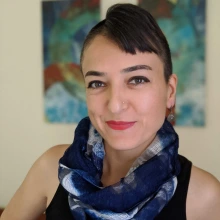
Haury Dissertation Fellowship: Nese Kaya Ozkan, Language Loss, Environmental Change, and Activism in Homshetsi Lands, Turkey
Abstract: The Homshetsis are an ethnic group living in the eastern Black Sea Region of Turkey who speak Homshetsnak, an endangered Armenian language. Against a background of nearly a century of assimilationist Turkish nationalism leading to a language shift from Homshetsnak to Turkish, recently the Homshetsi lands have faced intensive “development” projects such as hydroelectric power plants, gold mining, and main road constructions resulting in limited livelihood opportunities, large-scale deforestation, and “species invasions”. Today many Homshetsis are mobilizing around language revitalization and environmental activism to the extent that environmental concerns and concerns about language loss are increasingly one and the same. This dissertation shows how Homshetsi activists construct a universal Homshetsi identity by negotiating the value of the Homshetsnak language, traditional ways of living, and their natural environment (lands, rivers, forests). These negotiations involve discourses of nostalgia for traditional relationships of Homshetsi people with each other, with the land, and with their language as well as vocabularies and strategies borrowed from the international discourses of linguistic and environmental “endangerment” and politics. Key to the discourses of Homshetsi activism is the feeling of “loss” and the concept of “gor” (collaborative work) as an inclusive practice of collaboration. The discourses of “loss” enable Homshetsi activists to bring together their concerns for the sociolinguistic and environmental changes taking place in their lands while the re-signification of the traditional practice of “gor” sets the grounds for a universal inclusive Homshetsi identity and activism. Drawing on 18-months of field research in several key sites and locations, including Homshetsi owned cafes, organizations, and the villages in the cities of Artvin, Istanbul, Sakarya, Duzce, and Rize, highland summer pastures in Turkey as well as significant Homshetsi owned Facebook pages and groups, the project shows how Homshetsi activism is shaped by the increasingly intermingled concerns over the loss of Homshetsnak language and the environmental changes taking place on the Homshetsi lands.
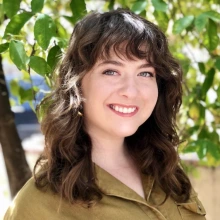
Haury Dissertation Fellowship: Rachel Rosenbaum, Maintaining and Repairing Ruins of Violence: Infrastructural Politics in Beirut, Lebanon
Abstract: This doctoral research is motivated by two overarching questions: 1) How are social inequalities and violence maintained by our natural and built environments? 2) How do people attempt to improve the well-being of their communities through changing these environments? I study these questions through examining the role of infrastructure, such as roads, housing, and electricity, in shaping people’s lives. In particular, I explore the impacts of infrastructural maintenance or lack thereof by studying ongoing work to repair material and social infrastructures leading up to and in the aftermath of the recent Beirut explosion. To do so, I study how non-governmental organizations and initiatives, infrastructure experts, impacted community members, and members of the diaspora are repairing urban infrastructures—such as waste management, housing, public space, and electricity—as an adaptation to the violence of the explosion which was layered into existing conditions of structural and urban violence. This study aims to explicate the sociopolitical and infrastructural arrangements that enabled the Beirut explosion while making a timely and important contribution to scholarship concerning infrastructure and urban studies, the afterlives of violence and disaster, and political anthropology. The data collected for this project is being shared with local stakeholders to inform sustainable urban planning efforts and the findings will be visualized on an interactive online site, www.regeneratehub.org, using digital ethnography to educate broader publics on the connections between infrastructure problems and solutions in Lebanon.
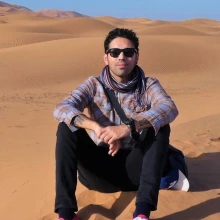
Haury Dissertation Fellowship: Ismael Sánchez-Morales, Assessing Variability among Aterian Lithic Assemblages: Implications for the Interpretations of Land-Use Patterns of MSA Hunter-Gatherers in North Africa. A Case Study from Morocco.
Abstract: Understanding the traits that define our species is one of the principal endeavors in the study of human evolution. It can be argued that Homo sapiens are characterized by exceptional behavioral flexibility and adaptability to varied environments. Among archaeological hunter-gatherer societies, this flexibility is well expressed in several dimensions of stone tool technology. The Aterian techno-complex of the North African Middle Stone Age (MSA) appears to present an anomaly. The Aterian was undeniably produced by Homo sapiens from ~150 to ~40 ka BP in varied environments extending from the Mediterranean and Atlantic coasts of North Africa to the southern fringes of the Saharan Desert, and from modern Mauritania to Egypt. Yet despite its long chronology and vast geographic distribution, Aterian lithic technology is often described as homogenous and extremely invariant, suggesting low diversity of forager land-use strategies. However, very few studies have aimed at an evaluation of technological variability of Aterian and other North African MSA lithic assemblages and the behavioral patterns reflected on this variation has not been sufficiently studied. The objective of this dissertation is to test whether Aterian lithic technology is indeed as homogeneous as it appears, or if there is significant temporal and geographical variability in particular aspects of Aterian lithic technology thought to reflect facets of land-use including mobility and lithic raw material exploitation patterns. The Aterian lithic assemblages from the Moroccan cave sites of Mugharet el’Aliya, Dar es-Soltan I, Rhafas, and Bizmoune are analyzed and compared in order to answer two specific questions: 1) do Aterian lithic components from sites located in varied geographic and temporal contexts show significant inter-assemblage variation?; and 2) do the observed technological patterns reflect flexibility/consistency in terms of land-use strategies? These questions are addressed using lithic analyses aimed at documenting landscape use-conditioned aspects of technology such as lithic assemblage composition, reduction methods, patterns of artifact refurbishing and discard, and the qualities and diversity of utilized raw materials. Through the investigation of the variability of Aterian land-use patterns, this research provides new insights into the nature and ubiquity of behavioral flexibility among early Homo sapiens.
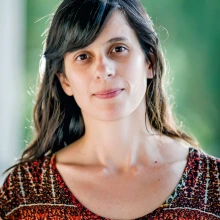
Haury Dissertation Fellowship: Paula Ugalde, Reconstructing a PaleoIndigenous communal space: living under the trees in the Atacama Desert, Chile, 12,800 – 11,200 cal yrs. BP
Abstract: Humans arrived in the Atacama Desert ca. 13,000 years ago, facing one of the harshest landscapes on Earth. They settled in a rainless stretch of land with scattered patches of biotic resources fed by rainfall in the distant Andes. They established social networks with people from different environments, creating essential bonds to maintain viable populations. However, we do not understand how they inhabited this forbidding landscape to make it their home. My research questions are: 1) what organizational principles guided the establishment of residential sites?; 2) how were living spaces created?, and 3) how were social bonds with people from other ecological areas enacted and reinforced in the core of the Atacama? I propose that, aside from water sources, groves of phreatophyte trees, especially Prosopis, were important when choosing locations for residential camps. These trees not only provided shade and endured droughts but fostered a more fertile environment by improving soils. These groves would also have been visible landmarks in an otherwise barren landscape, promoting aggregation in the region between the Andes and the Pacific coast. Aside from novel archaeological data, my dissertation taps into a vast ethnographic record, to understand the deep relationships that hunter-gatherers have formed with trees; something that has not been profoundly theorized archaeologically. Based on these data, I propose that human-tree relationships have not always been about consumption or exploitation, and that often this meant nurture practices. Given the multiple advantages of the species of trees surrounding my study sites, I posit that the first peoples of the Atacama made efforts to preserve Prosopis, using other tree species for firewood. In order to test this, I will (1) study soil modification to learn the extent and intensity of human occupations in five Paleoindian sites; (2) map, taxonomically identify, and radiocarbon date tree stumps, wooden artifacts and charcoal to test for contemporaneity between sites and groves; (3) analyze lithic artifact styles to establish contemporaneity between the sites; and (4) measure stable isotopes of camelid bones and fibers to determine their provenance, providing a new perspective on PaleoIndigenous movements across the Andes.
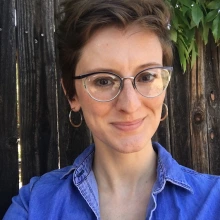
Andrew William Amann, Jr. Award: Sydney Pullen, “Living on the Labor of Others”: Education for Work, (Under)development, and Racial Ideologies in Rural South Carolina
Abstract: As an effort to remedy the chronic economic underdevelopment of rural Lowcountry South Carolina, state economic development boosters engage in aggressive industrial recruitment efforts. Economic developers provide a variety of incentives for large manufacturers to relocate to the majority Black region. Local power brokers highlight postsecondary technical education and workforce development programs as both an incentive for companies and as a boon for local residents—in theory, companies can rely on a well-trained workforce and technical education students can gain the necessary skills to obtain well-paying jobs with manufacturers. After the Civil War, industrial education, the precursor to technical education, was similarly framed as an opportunity for freedpeople to achieve economic mobility; however, some African Americans saw it as a form of education designed to limit their intellectual and economic horizons, and maintain racial capitalism’s racial division of labor, for the benefit of Northern industrialists. This project investigates how historical racial ideologies of labor shape present-day economic development policies. My research questions are: 1) What racial ideologies were at work in industrial education’s moralizing discourse in the Lowcountry at the turn of the 20th century? How did these racial ideologies manifest in the day-to-day operations of industrial schools for African Americans in the Lowcountry? 2) How and to what ends do historical racial ideologies appear in the discourse and practice of contemporary technical education programs and economic development policies in the Lowcountry? To address these questions, I have conducted archival research, interviews, and participant observation with Lowcountry residents who are connected with technical education programs, economic development initiatives, and regional manufacturers.

